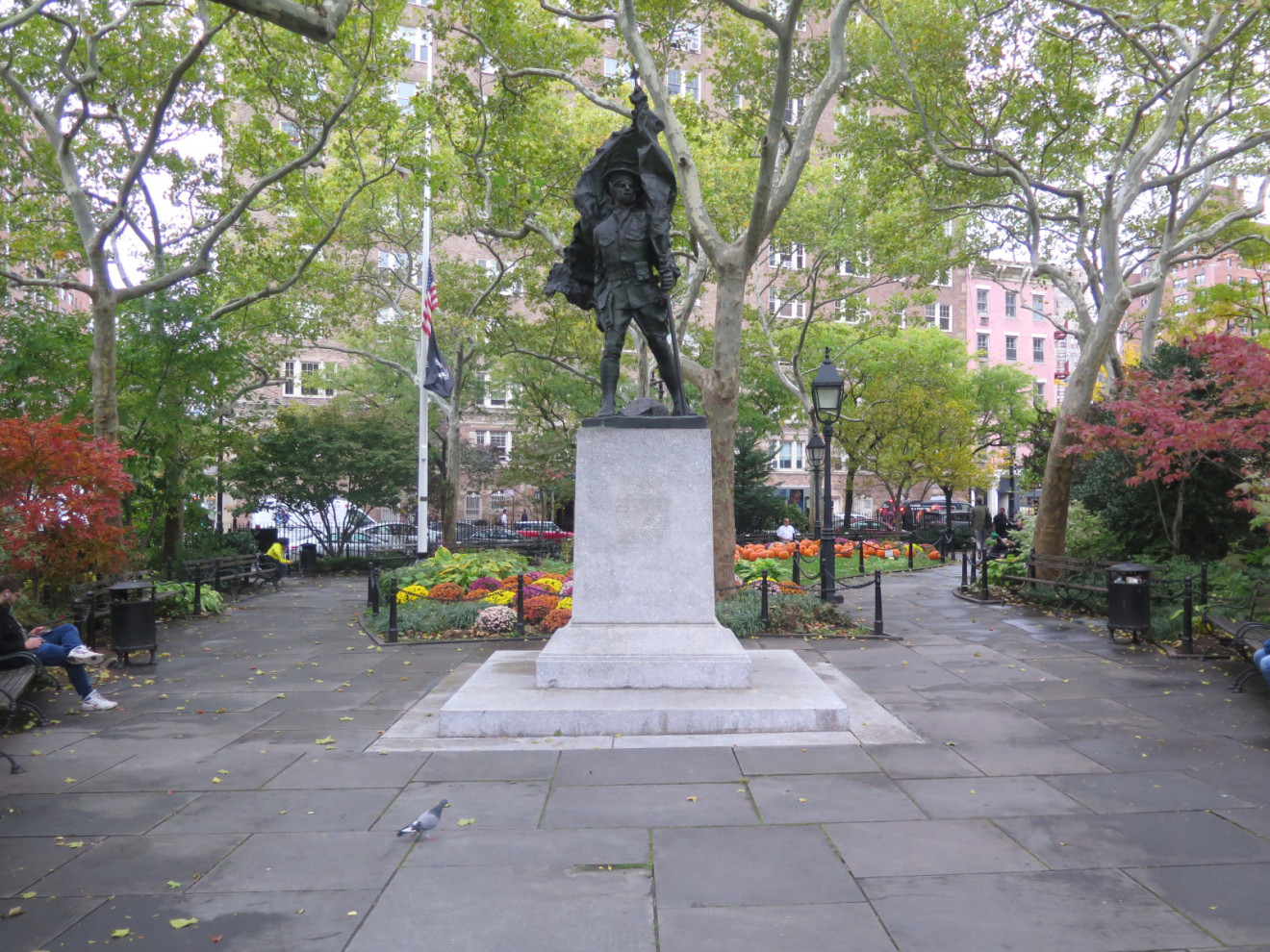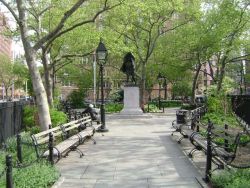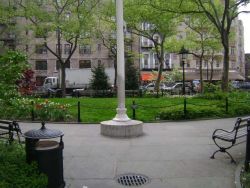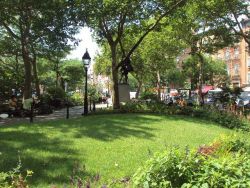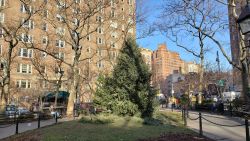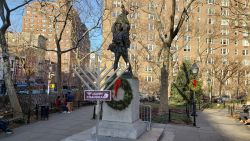Abingdon Square
View all monuments in NYC Parks, as well as temporary public art installations on our NYC Public Art Map and Guide.
Abingdon Square Doughboy
| Artist: | Philip Martiny |
| Dedicated: | 1921 |
| Location: | South end of park; West 12th Street, 8th Avenue, Hudson Street |
Artwork History
As its faded inscription reads, this sculpture was “erected by popular subscription in honor of the brave men who went forth from this neighborhood to join the Armed Forces of the United States during the World War.” The dramatic bronze statue on a granite pedestal, dedicated in 1921, is by Philip Martiny (1858–1927), and depicts a foot soldier in battle (known commonly in World War I as a “doughboy”), pistol in one hand, the other holding a swirling American flag.
The derivation of the term doughboy remains in question. It was first used by the British in the late 18th and early 19th centuries to describe soldiers and sailors. In the United States the nickname was coined during the Mexican-American War (1846–1848), and was widely popularized during World War I (1914–1918) to refer to infantrymen. After the war, in which Americans saw combat in 1917-18, numerous communities commissioned doughboy statues to honor the local war heroes. The Abingdon Square Doughboy is one of eight such statues erected in New York City’s parks.
The monument was a gift of the Jefferson Democratic Club, whose headquarters once stood opposite this statue north of the park on the site now occupied by the residential high rise at 299 West 12th Street. Philip Martiny was a well-known sculptor of his day who received numerous public commissions, among them the statues on the Surrogate Courthouse in Lower Manhattan, and the Chelsea Doughboy at 28th Street and 9th Avenue (for which the same model posed). The unveiling of the statue is reported to have been attended by 10,000 spectators, including 200 Gold Star Mothers (those who lost their sons in battle), and New York Governor Alfred E. Smith. In 1993, the statue was cleaned of soiling and surface corrosion, repatined, and waxed by the NYC Parks monuments unit, and since 1996 has been cared for by NYC Parks' Citywide Monuments Conservation Program, supported in part by the Abingdon Square Conservancy and contributions from individual donors.
In 2004, during the redesign and renovation of the park, the monument was relocated to face the southern entryway, improving its visibility and illumination. It remains a focal point of Abingdon Square and a symbol of sacrifice and community pride.
Artwork Details
| Description: | Figure (heroic scale) on pedestal |
| Architect: | William A. Hewlett (pedestal) |
| Materials: | Bronze, Deer Isle granite |
| Dimensions: | H:1'7-1/2" W: 10'3" D: 10'3" |
| Foundry: | Bureau Brothers, Philadelphia |
| Donor: | The Jefferson Democratic Club |
| Cast: | ca. 1921 |
Inscription
ERECTED / BY POPULAR SUBSCRIPTION / IN HONOR / OF THE BRAVE MEN / WHO WENT FORTH / FROM THIS NEIGHBOR- / HOOD TO JOIN THE / ARMED FORCES OF / THE UNITED STATES DURING THE WORLD WARPlease note, the NAME field includes a primary designation as well as alternate namingsoften in common or popular usage. The DEDICATED field refers to the most recent dedication, most often, butnot necessarily the original dedication date. If the monument did not have a formal dedication, the yearlisted reflects the date of installation.
For more information, please contact Art & Antiquities at (212) 360-8163.
Check out your park's Vital Signs
Clean & Safe
Green & Resilient
Empowered & Engaged Users
Share your feedback or learn more about how this park is part of a
Vital Park System
